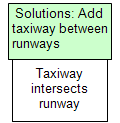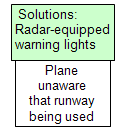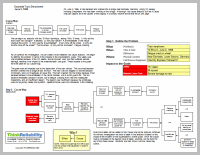On the evening of June 29, a train carrying liquefied natural gas derailed and exploded in the town of Viareggio, in western Italy. Search and rescue operations are still ongoing, and the cause for the derailment is not yet known. Although that means we are lacking some information, we can still begin our root cause analysis investigation, in the form of a Cause Map. A thorough root cause analysis built as a Cause Map can capture all of the causes in a simple, intuitive format that fits on one page.
The benefit to beginning a root cause analysis investigation before all the information is known is to provide a framework for the investigation to build on. People find it much easier to comment on a partially finished Cause Map than to piece together the investigation from scratch.
A root cause analysis template is available for download from the Think Reliability web page to assistant with the investigation. The first step is to fill out the outline. Don’t leave any blanks in the outline; if you don’t know something, put a question mark. The first line is the ‘what’ or the problem. Rather than spending time debating what ‘the problem’ is, we can put a number of things. For example, the problem here could be defined as a gas leak, an explosion, and a train derailment. We put all these things on the problem line. The rest of the information is known, though we may add more detail later, except for differences. Differences can be key to an investigation. For example, if you have a process that works for 30 straight sunny days, then fails the day it rains, it is worth looking into the impact of the rain on the process. Here, no differences are immediately coming to mind, so we’ll put a question mark in this blank.
Once we’ve defined the problem, we can define the problem with respect to the impact to the goals. We don’t know how many people, overall, were killed or injured, but we can just put “at least” to show that the numbers aren’t exact. We know that the environmental goal was impacted, because of the gas leak, the community goal was impacted because of the required evacuation, and the material/labor goal was impacted because of the collapsed houses, and the damage to the train.
Now we begin the analysis. We begin with the impacted goals and ask “why” questions, moving to the right. When we can’t answer the “why” question, we can use a question mark, or put some possibilities (theories) that have been presented. For example, we’re not yet sure why the train derailed. Some of the possibilities that have been presented are damage to the tracks, a problem with the braking system, or malfunctioning wagon locks. The Cause Map (so far) is shown in the downloadable PDF (to download, click “Download PDF” above.) As you can see, there is a lot of information present, even though we don’t know all of what happened yet.
As more information is available, we can update the Cause Map. As with any root cause analysis, the level of detail in the analysis is based on the impact of the incident on the organization’s overall goals.





